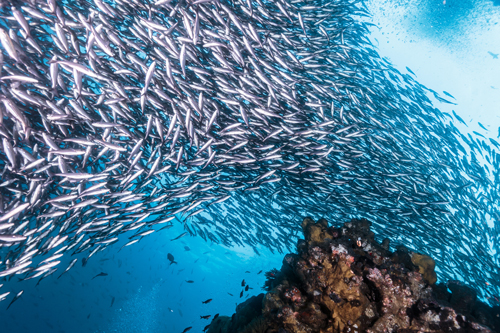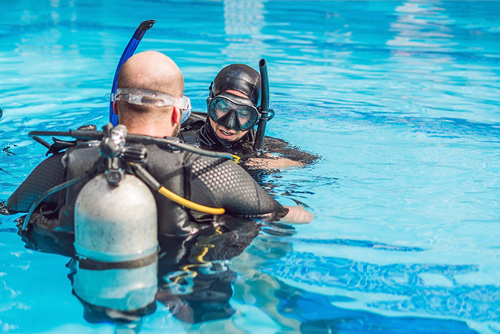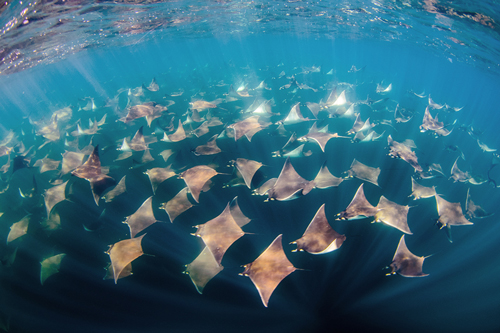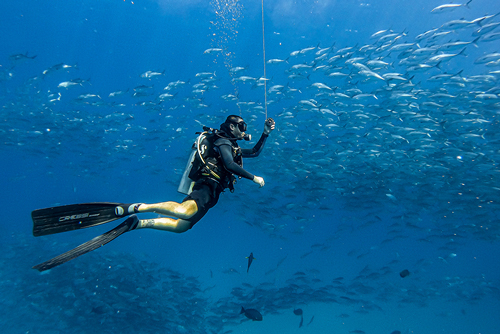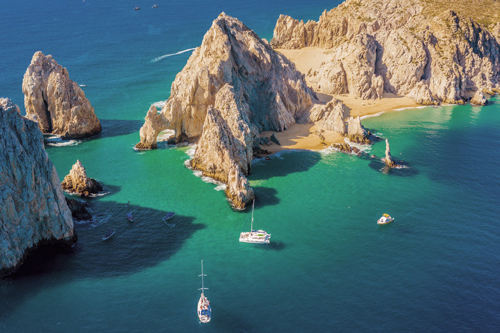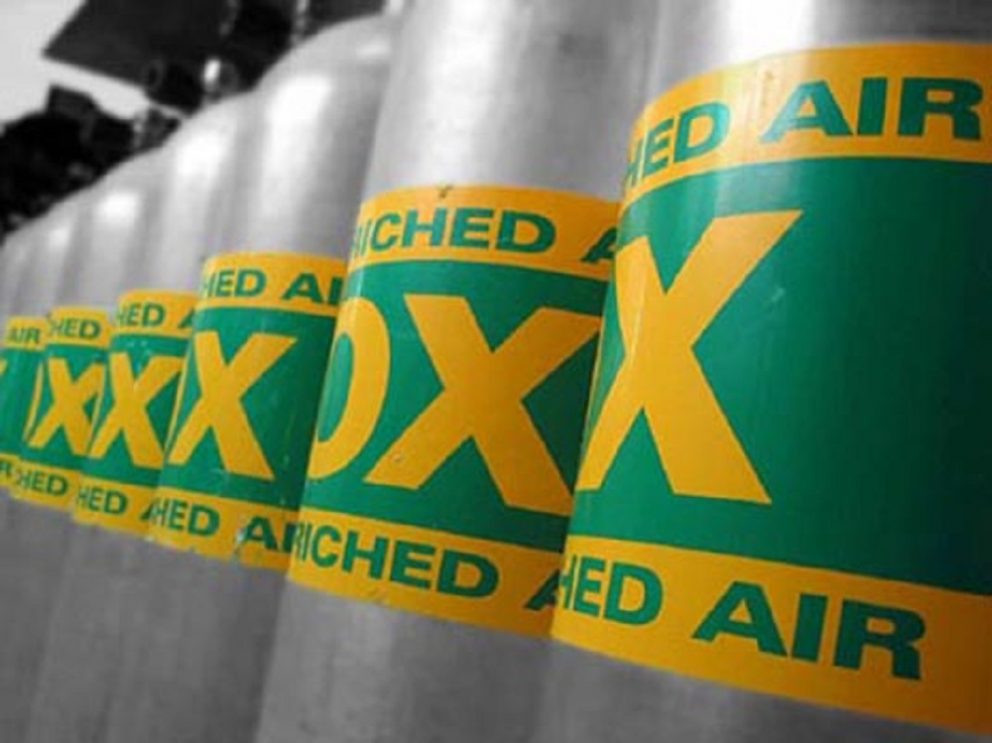Are you a certified scuba diver with good air consumption? Good enough that you are surfacing with plenty of air after most dives? Then you might seriously consider taking a PADI Enriched Air Nitrox course. You can also enquire about an introduction to Nitrox during your Open Water Course training.

What is it?
A tank of air contains 21% oxygen (o2) and 79% nitrogen (N) – ignoring a hidden 1% of other gas that we need not concern ourselves with here. Enriched Air is simply a blend of these two gases that has more o2 than air does – normally set at 32% or 36% instead of 21%. Actually (technically) you can say air is a blend of 21% ‘Nitrox’.
What are the benefits?
- If we are diving with more o2 in our gas blend then this means we can reduce our nitrogen intake. You will remember from the Open Water Course that nitrogen is the gas responsible for causing bubbles to form in the blood. We must exhale sufficient levels of nitrogen from the circulatory system before reaching a shallower depth as calculated by the tables or on your dive computer. People like to dive with Nitrox because absorbing less nitrogen at depth affords us more bottom time – if your air consumption is good enough anyway. Our ‘no-decompression’ limits are now extended. For example: diving to 18 meters on air will afford you 56 minutes at this depth whereas diving at 18 meters with 32% oxygen suddenly gives you 90 minutes.
- Some divers like Enriched Air Nitrox, or EANx, because they argue it makes them feel more awake after a dive.
- You can plan more dives during the same day because, of course, your no decompression limits are extended. You might want to consider doing a EANx course if you are going on a liveaboard vacation. It’s normal on these trips to do 3 – 5 dives per day in a 8 – 10 day period. Nitrox is also recommended on regular dive charters when repetitive dive profiles will be on the deeper side.
- If you’re planning to go down the technical diving route then this is the first step into the world of tec, or even planning to start exploring sunken wrecks.

Extended Bottom Time Depending on Gas Blend
What are the limitations?
Absorbing less nitrogen with Enriched Air Nitrox seems, so far, to be a better option. So why don’t all dive centres just use this instead of regular air?
OXYGEN TOXICITY:
Oxygen becomes toxic at depth. From a physiological point of view, you can use air safely to 57 meters with 21%. (Note: It’s NOT safe to go so deep on one tank of air because of other factors! Check out reports of nitrogen narcosis and remember how your air consumption increases substantially with depth). When using 36% Nitrox the maximum depth limit reduces to 30 meters. Therefore, Nitrox has an optimal depth of 18 – 30 meters. If you go over your maximum depth then this can lead to oxygen toxicity and will eventually cause convulsions and drowning – often with no warning. So, in addition to being able to make repetitive dives with EANx, it is just as important to track your oxygen exposure. Interestingly, if you were to dive with pure oxygen, you would not be able to go much deeper than 4 – 6m. Which is why instructors are always correcting divers who refer to their ‘oxygen tanks’. It’s air!
IT’S FLAMMABLE:
There are increased risks when filling tanks with a higher oxygen content. It is more flammable and special equipment should be used for handling high concentrations of o2.
EXPENSE:
Nitrox is more expensive and there can be extra cost passed down to the diver.
LOGISTICAL ERROR:
With lots of different Nitrox blends being used in dive centres at any given time it’s important to label tanks and for each diver to analyse their tank individually. Therefore using EANx increases logistical planning somewhat.
So both enriched air and regular air have their limitations. Both lead to potential problems if dive planning limits and computer warnings are not respected. However, it’s wise to get your Nitrox certification so that you have a choice on vacation. Plus, the class will serve to increase your understanding of concepts in the physiology of diving that are nearly always forgotten at beginner level.
How to Get Certified
If you are interested in taking the class on your next vacation then you can opt to study online with interactive eLearning to save time in the classroom. Or, you can schedule an online interactive session with your dive shop if they offer this option. You will revisit physics concepts taught at beginner level, learn the correct tank labelling procedures and also learn in more detail the risks and benefits of diving with enriched air. You will complete a workshop with your instructor that covers tank analysis and computer set up. Dives for the course are optional. Your EANx license will certify you to dive with up to a 40% Nitrox mix.



